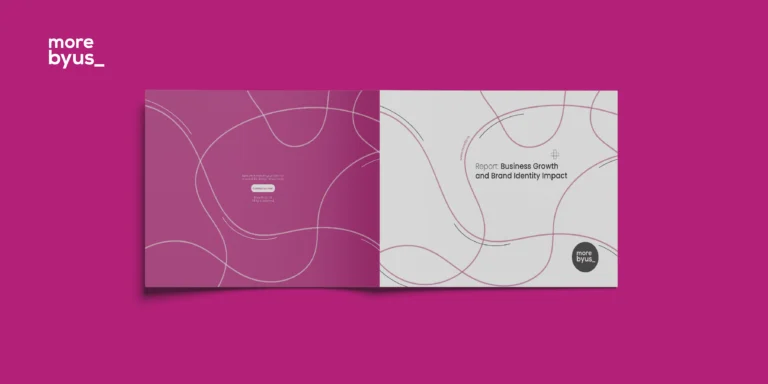From Vision to Victory: A Deep Dive into the Presentations that Propelled Giants
In the world of business, a good pitch deck can really make a difference. It’s the starting point for an entrepreneur, telling the story of a brand through pictures and words. These presentations are more than just numbers and graphs; they tell exciting stories that get investors, partners, and customers excited about what a company is doing.
In this blog post, we’re going to explore the history of business by looking at some famous pitch decks. We’ll examine these documents to see what made them work and how they helped well-known companies get their start.
We’ll cover 10 famous pitch decks, showing the lessons they offer for anyone trying to make it in business. Each one demonstrates the importance of a good story, a clear plan, and the determination to overcome challenges.
So, come along as we dive into the world of business startups and growth, guided by the pitch decks that helped build some of the biggest tech brands. You’ll learn about the strategies and stories that helped these companies succeed, and maybe find some inspiration for your own business journey.
Facebook Pitch Deck

In the dawn of the social media era, Facebook’s original pitch deck was a modest but forward-thinking creation by a young Mark Zuckerberg in 2004. This 26-slide presentation was the blueprint for what would become a social networking behemoth.
The design of the deck was remarkable for its simplicity and effectiveness in conveying the idea of connecting people online. It transcended physical distances with a design that emphasized user-friendliness and potential for engagement. The interface showcased in the deck was clean and intuitive, making the concept of an interconnected online community easily understandable.
Despite its lack of polish compared to later presentations, this first pitch deck radiated enthusiasm and a firm belief in a world interconnected via the internet. It was more than just a presentation; it was a window into the future of social interactions. This simplicity and clarity were key in drawing early investors to this groundbreaking idea.
Today, this pitch deck stands as a historic symbol of the early days of one of the most transformative digital companies.
The design choices made in Facebook’s initial pitch deck were both minimalist and groundbreaking for its time. The deck featured a sleek, uncluttered design with straightforward layouts, accentuated by Facebook’s now-iconic blue. This particular shade of blue projected a sense of trust, reliability, and confidence. It’s fascinating to ponder how different the impact might have been if another color had been chosen, underscoring the subtle yet powerful role of design in shaping perceptions and decisions.
Linkedin Pitch Deck

In the early 2000s, LinkedIn’s founders, Reid Hoffman, Allen Blue, and their team, introduced a pitch deck for a new professional networking platform. LinkedIn was launched on May 5, 2003. This 2004 presentation was instrumental in drawing more investors and partners to LinkedIn, a platform aimed at revolutionizing professional connections and job searching.
LinkedIn’s original pitch deck, though basic compared to modern standards, effectively communicated its core mission. It highlighted the necessity of an online community where professionals could interact, network, and advance their careers. The deck underscored the importance of trusted recommendations and connections in the professional world.
The LinkedIn pitch focused on its long-term vision, stressing the importance of building a lasting, global network of professionals. This strategic foresight and commitment to establishing a dependable online community are key reasons for LinkedIn’s enduring success.
Today, with millions of users globally, LinkedIn is the premier professional networking platform. Its initial pitch deck laid the foundation for this achievement, showcasing the impact of digitally connecting professionals and the role a compelling pitch plays in turning innovative ideas into successful enterprises.
LinkedIn’s early design choices reflected a formal and corporate aesthetic, aligning with its business networking focus. This design approach conveyed a sense of professionalism, reliability, and confidence to both business partners and users, reinforcing trust in the platform’s value and potential.
YouTube Pitch Deck

In 2005, the founders of YouTube, Chad Hurley, Steve Chen, and Jawed Karim, introduced a pitch deck that marked the start of a revolution in how videos are shared and viewed globally. This presentation to early investors was a key milestone in YouTube’s journey to becoming the leading video-sharing platform. Accessible worldwide, YouTube was launched on February 14, 2005.
YouTube’s pitch deck was notable for its straightforward approach and focus on user-generated content. It highlighted the need for a platform where anyone could easily upload, share, and discover videos, emphasizing YouTube’s potential to democratize media by providing a platform for people to share their voices and stories.
The deck was significant for its foresight in recognizing the growing demand for online video content and the power of video as a medium for storytelling and self-expression.
Securing early funding and setting the stage for rapid growth, YouTube’s pitch deck showed that sometimes the most impactful innovations start with a simple yet powerful idea: a platform where users can share videos.
This deck serves as a reminder of the importance of identifying market needs and creating user-friendly solutions at the outset of the innovation process. It underscores the transformative power of technology in society and the democratization of media that has shaped the modern internet landscape.
The design of YouTube’s pitch deck was clear and straightforward, reflecting the web design trends of the time. It featured a basic layout with a predominantly white background and dark text, creating a clean and uncluttered look. While suitable for its era, the introduction of the color red was a key design shift, giving the platform a more distinctive and recognizable identity.
BuzzFeed Pitch Deck

BuzzFeed was founded in 2006. In the same year, BuzzFeed’s pitch deck, created by Jonah Peretti and John S. Johnson, presented a fresh vision for digital media. It outlined their plan to build a media company that would leverage social sharing and viral content to stand out in the digital landscape.
The design of BuzzFeed’s pitch deck was key in highlighting its focus on engagement and shareability. It showcased the importance of creating content that resonates with readers and is easily shared on social media platforms. The deck also spotlighted BuzzFeed’s data-driven strategy for content creation and dissemination.
What set this pitch deck apart was its forward-thinking approach to online media. It recognized the significance of crafting content that people would not only consume but also actively share, predicting the growing influence of social media in how content is spread and consumed.
BuzzFeed’s pitch deck played a pivotal role in securing early investments and laying the groundwork for what would become a giant in digital media, known for its engaging quizzes, viral content, and innovative journalism style.
The deck’s design was a reflection of BuzzFeed’s ethos. Opting for a lively and dynamic design, it mirrored the engaging and often humorous nature of BuzzFeed’s content. The choice of a black background, though unconventional, may have been a strategic move to make the design stand out, enhancing the uniqueness and memorability of their presentation.
Dropbox Pitch Deck

In 2007, Drew Houston and Arash Ferdowsi used a pitch deck to introduce Dropbox, a service that would revolutionize digital file storage and sharing. This pitch deck was key to securing the initial investment for Dropbox, which officially launched on September 11, 2008.
Dropbox’s presentation was notable for its straightforward approach and focus on solving a widespread problem: the challenge of accessing and sharing files across different devices. It introduced Dropbox as a groundbreaking cloud-based service for file synchronization and storage, allowing easy file access from anywhere.
The pitch deck was exceptional in its emphasis on user experience and simplicity. It underscored the need for an intuitive, cross-platform solution that could simplify file sharing and storage. This user-centric design approach laid the groundwork for Dropbox’s success.
Essential in obtaining early funding and setting Dropbox on its path to becoming a leader in cloud storage, the pitch deck is a prime example of how addressing a common problem with a simple solution can disrupt industries and change the way people work and collaborate.
Dropbox’s pitch deck reminds us that innovation often begins with user-friendly solutions to real-world problems. It highlights the transformative impact of technology in enhancing productivity and simplifying everyday tasks.
The design of Dropbox’s pitch deck was clean and minimalistic, featuring a white background, black text, and straightforward graphics to ensure clarity and understanding. The final slides introduced more vibrant colors, creating a distinct contrast with the earlier slides and keeping the audience engaged throughout the presentation.
Airbnb Pitch Deck

In 2008, the founders of Airbnb, Brian Chesky, Joe Gebbia, and Nathan Blecharczyk, introduced a groundbreaking idea with their pitch deck. This document illustrated their vision of transforming spare rooms and empty spaces into unique travel experiences.
Consisting of only 10 slides, this initial presentation effectively communicated their mission to foster a world where people can feel a sense of belonging through local, authentic, diverse, inclusive, and sustainable travel. The deck introduced the concept of home sharing, underlining its benefits for both hosts and guests.
What made the Airbnb pitch deck stand out was its use of striking visuals and a clear, concise narrative. This approach not only attracted investors but also ignited the global sharing economy. It laid the groundwork for Airbnb’s rapid expansion, redefining the way people travel and explore new destinations.
The design of the Airbnb pitch deck serves as a prime example of how presenting a simple idea in an impactful way can disrupt industries and change the way we live and travel. Prior to launching their product, the Airbnb team conducted extensive research and applied this knowledge to their design. This meticulous approach in presenting their concept in the best possible light played a significant role in the quick success of their product.
Uber Pitch Deck

In 2008, Travis Kalanick and Garrett Camp unveiled Uber’s pitch deck, introducing a ride-sharing concept that would redefine urban transportation. This presentation was key to securing the initial funding for Uber, setting the groundwork for what would become one of the most transformative tech companies in modern history.
Uber’s pitch deck stood out for its straightforward and uncluttered design. It effectively communicated a solution to a common problem: the challenge of finding reliable and safe transportation in cities. The deck showcased how Uber’s combination of an independent driver network and smartphone technology could revolutionize the way we travel in urban environments.
The deck was notable for its forward-looking perspective. Uber was presented not just as a practical alternative for hailing rides but as a harbinger of a broader shift in urban travel. The presentation emphasized the potential benefits of Uber, such as reducing transportation costs, alleviating traffic congestion, and providing new job opportunities for drivers.
Crucial in garnering early investment, Uber’s pitch deck paved the way for the company’s emergence as a global force in transportation. It exemplifies how a simple yet innovative idea, compellingly presented, can disrupt traditional industries and reshape urban mobility.
The design of Uber’s pitch deck was characterized by simplicity and clarity. It employed a minimalist style, using a classic color combination of black text on a white background. This choice ensured the content was easily readable and clearly understood, while also conveying a sense of authenticity and professionalism. This straightforward design approach helped to focus attention on the revolutionary concept of Uber.
Snapchat Pitch Deck

In 2011, the co-founders of Snapchat, Evan Spiegel, Bobby Murphy, and Reggie Brown, unveiled a pitch deck that introduced Snapchat as a trailblazing multimedia messaging app. This presentation played a critical role in securing early funding and establishing Snapchat’s unique approach to communication, where messages are ephemeral.
The pitch deck for Snapchat was distinguished by its straightforward slogan, “Your Camera, Your Life.” It highlighted the app’s focus on authentic, instant, and personal communication. The presentation effectively showcased Snapchat’s innovative feature of disappearing images and videos, promoting the sharing of real and spontaneous moments.
What made this pitch deck particularly noteworthy was its focus on the emerging trend of visual communication. Recognizing that pictures and videos were becoming the preferred medium for sharing experiences, Snapchat positioned itself at the forefront of this shift.
The pitch deck was instrumental in attracting early investors and users, contributing significantly to Snapchat’s rise as a cultural phenomenon. It exemplifies how identifying new trends and creating a unique user interface can revolutionize established methods of communication and change the way people interact and express themselves.
Snapchat’s pitch deck reminds us that innovation often involves rethinking how we share information and interact in a fast-evolving digital world. It underscores the transformative impact of technology on personal interaction and self-expression.
To stand out in a saturated social media landscape, Snapchat’s pitch deck was designed to captivate and differentiate itself. Targeting a younger audience, the design incorporated bright colors, illustrative prototypes, and bold visuals. Many slides featured playful doodles, adding a friendly and engaging element to the presentation, aligning perfectly with the app’s informal and fun user experience.
Tinder Pitch Deck

The original pitch deck for Matchbox, which later evolved into Tinder, plays a key role in revolutionizing the online dating scene. This presentation marks the beginning of Tinder, an app destined to change the way people meet and form connections with potential partners. Launched in 2012, Tinder emerges from the rebranding of Matchbox following the discontinuation of the Cardify project in August 2012. This transition leads to Tinder’s soft launch on the App Store in September of the same year.
The Matchbox pitch deck is remarkable for its focus on simplifying and adding a game-like aspect to dating. It introduces the iconic swiping mechanism—swipe right to “like” and left to “dislike”—making the process of finding matches both engaging and interactive. The presentation underscores Matchbox’s aim to make socializing easier and more enjoyable.
The deck stands out for its insight into evolving dating dynamics and the increasing role of mobile technology. It addresses the need for a quick, fun, and casual way to meet and engage with potential partners.
This pitch deck plays a vital role in attracting investments and encouraging user adoption, contributing significantly to Tinder’s status as a cultural icon and reshaping the dating world. It is a prime example of how technology can transform traditional sectors and make dating more accessible and enjoyable for a wide audience.
Matchbox’s pitch deck is a testament to the importance of rethinking conventional norms and leveraging technology to create novel, exciting ways for people to connect and build relationships in today’s digital era. It demonstrates the impact of simplicity and a user-centric design approach in shaping the future of social interactions.
The design of the deck is strategically clear and focuses on addressing the pain points of users. Its straightforward design, complemented by simple visuals, effectively communicates the core purpose of the app, aligning perfectly with its mission to streamline and revolutionize the dating experience.
Tik Tok Pitch Deck

TikTok, originating from ByteDance, a well-established tech giant, likely adopts a slightly different approach in its initial presentations and strategies compared to traditional startup pitch decks. Its design and approach distinguish it from traditional tech pitch decks, drawing on the app’s features and ByteDance’s modern design philosophy.
The emphasis is on the app’s core functionality, showcasing a visually rich and engaging design, including video content. Its ease of use and minimalistic design starkly contrast the more complex designs of earlier social media platforms, forming a key element of their presentation. TikTok’s strategy involves capturing a global audience while maintaining local relevance through localized content and creators. Reflecting its target demographic, the app exudes a youthful, trendy vibe, resonating with the preferences and trends of the younger generation.
In summary, TikTok’s design and strategic approach, as reflected in their initial presentation, are characterized by a strong visual focus, algorithmic personalization, simplicity, a mobile-first strategy, a balance between global and local content, and a youthful aesthetic. These elements set it apart from the traditional, text-heavy, and formally structured tech pitch decks of the past.
Even if you think design isn’t important, it really matters a lot. Good design can make your idea shine or cause people to lose interest.
The saying goes, “Don’t judge a book by its cover,” but we often do, especially with new authors. For their first book, publishers work hard to make the cover eye-catching for the right audience. If the cover doesn’t stand out, people might not notice a great book.
Launching a company and crafting a pitch deck have parallels with book publishing. It’s important to have a design that grabs the attention of your audience and potential investors. A good design can give you an edge and make your idea even more attractive.






















